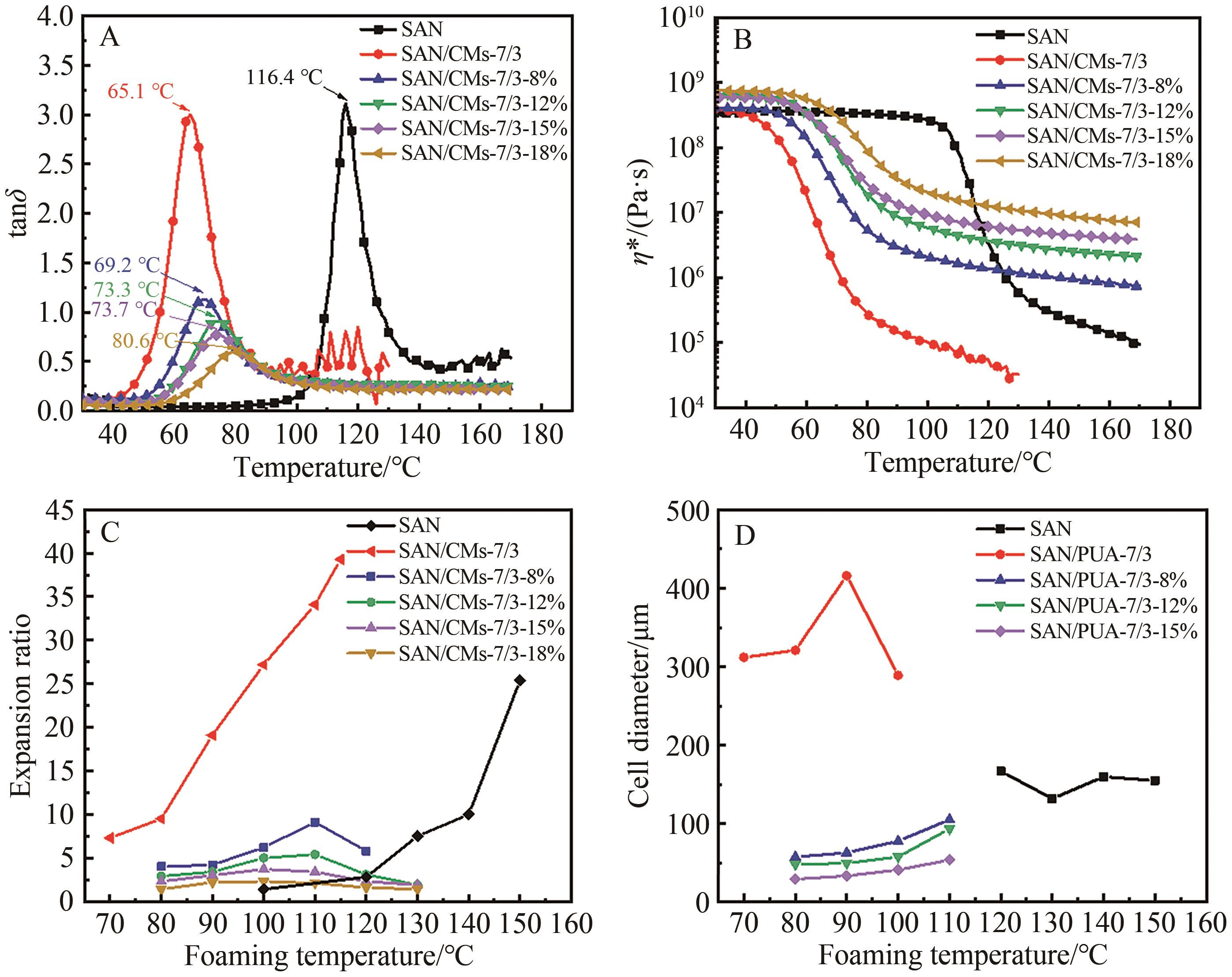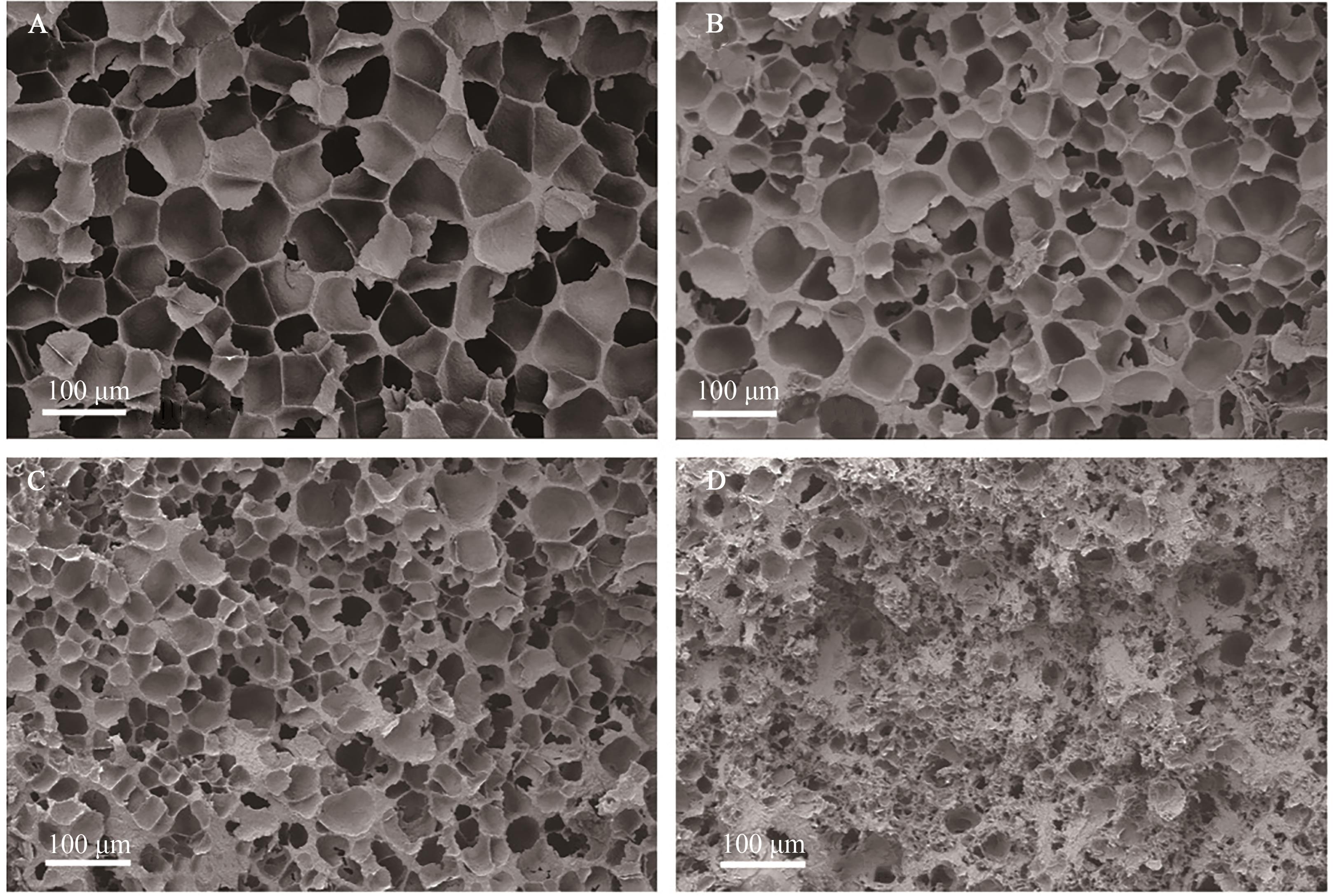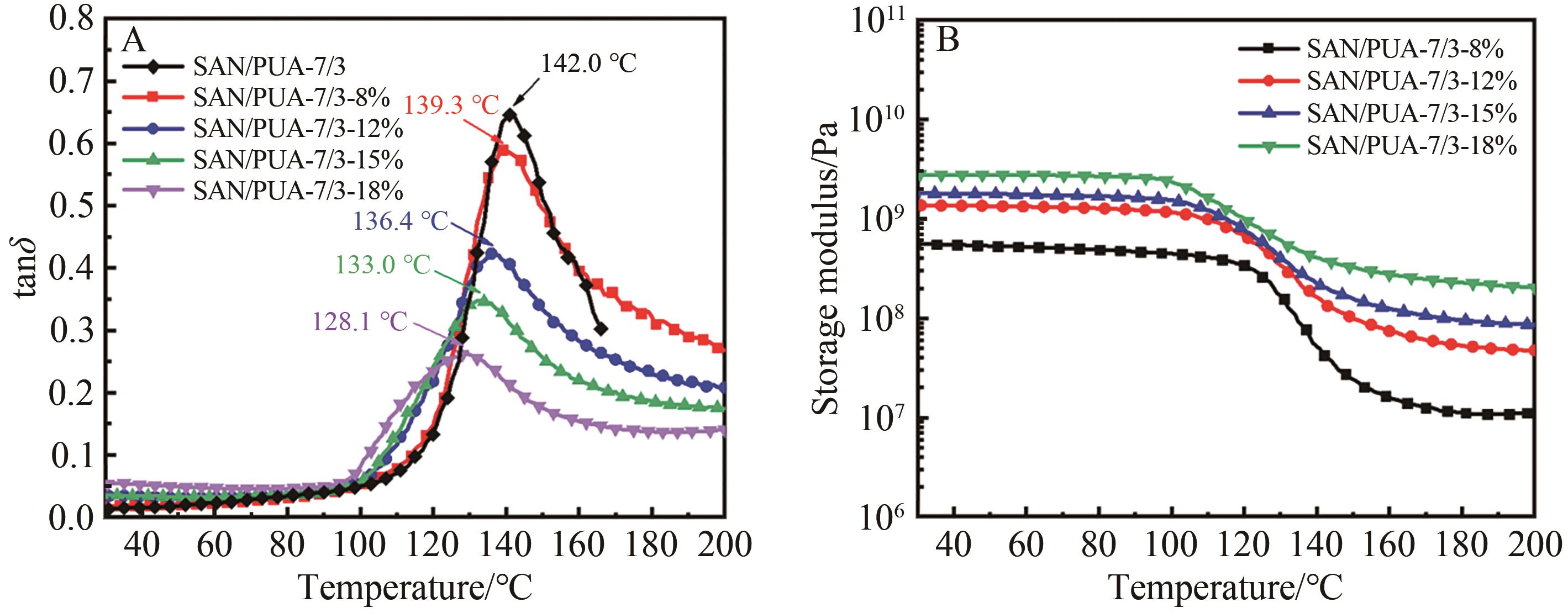
Chinese Journal of Applied Chemistry ›› 2023, Vol. 40 ›› Issue (9): 1267-1276.DOI: 10.19894/j.issn.1000-0518.230139
• Full Papers • Previous Articles Next Articles
Carbon Nanotube Modified Styrene-Acrylonitrile Copolymer/Polyurea Nanocomposite Foams
Man TIAN1,2, Jiang-An YOU1,2, Zhi-Wei JIANG1( ), Tao TANG1,2(
), Tao TANG1,2( )
)
- 1.State Key Laboratory of Polymer Physics and Chemistry,Changchun Institute of Applied Chemistry,Chinese Academy of Sciences,Changchun 130022,China
2.School of Applied Chemistry and Engineering,University of Science and Technology of China,Hefei 230026,China







